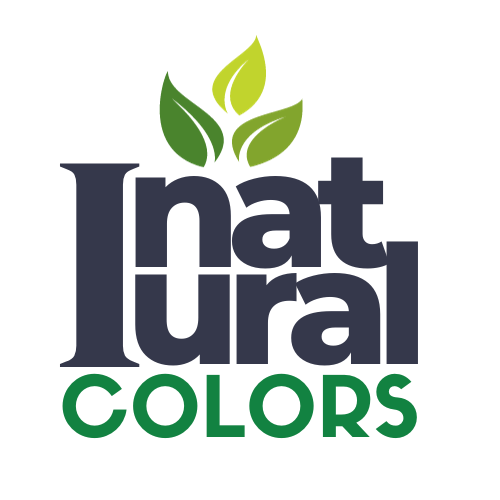Beautiful Plants For Your Interior

Producing Natural Colors – Introduction
Natural colors, derived from plants, animals, and minerals, have been used for centuries in various applications, from food and cosmetics to textiles. These colors offer an appealing alternative to synthetic dyes, which are often associated with health risks and environmental concerns. However, the production of natural colors comes with its own set of challenges. In this article, we will explore these challenges, their implications, and the future prospects of natural color production.
Historical Background
The use of natural colors dates back to ancient civilizations. Egyptians used henna and indigo, while Romans employed Tyrian purple extracted from sea snails. With the advent of industrialization, synthetic colors became prevalent due to their cost-effectiveness and ease of production. However, the modern shift towards sustainability and health consciousness is rekindling interest in natural colors.
Sources of Natural Colors
Plant-Based Sources
Plants are the most common sources of natural colors. Carotenoids from carrots and tomatoes, anthocyanins from berries, and chlorophyll from leafy greens are just a few examples. Each plant source offers a unique hue and set of properties.
Animal-Based Sources
Animal-derived colors, such as cochineal extract from insects, have been used historically, especially in cosmetics and food. Despite their vibrant hues, ethical and dietary concerns limit their use today.
Mineral-Based Sources
Minerals like ochre and lapis lazuli have been used since ancient times for their rich colors. They are primarily used in art and decoration but are less common in food and cosmetics due to potential toxicity.
Extraction Processes
Traditional Methods
Traditional extraction methods often involve drying, grinding, and boiling plant materials. These methods, while simple, are labor-intensive and may result in inconsistent color quality.
Modern Techniques
Advances in technology have introduced more efficient extraction methods, such as supercritical fluid extraction and ultrasonic-assisted extraction. These methods improve yield and consistency but require significant investment in equipment and expertise.
Regulatory Considerations
FDA Guidelines
In the United States, the FDA regulates the use of natural colors in food and cosmetics. Producers must comply with stringent guidelines to ensure safety and efficacy.
International Standards
Internationally, regulations vary. The European Union, for instance, has its own set of standards that producers must adhere to, often requiring rigorous testing and certification.
Cost Implications
Comparison with Synthetic Colors
Natural colors are generally more expensive than synthetic ones due to the complexities of extraction and variability in raw materials. Synthetic colors, being easier and cheaper to produce, dominate the market.
Factors Influencing Cost
Factors such as the availability of raw materials, extraction efficiency, and regulatory compliance significantly influence the cost of natural colors. Seasonal variations and agricultural conditions also play a crucial role.
Stability and Shelf Life
Challenges in Maintaining Color Stability
Natural colors are prone to degradation due to factors like light, heat, and pH changes. This instability poses a significant challenge for producers, especially in food applications.
Solutions and Advancements
To combat stability issues, researchers are exploring encapsulation technologies and natural preservatives. These advancements aim to enhance the shelf life and stability of natural colors.
Color Consistency
Variability in Natural Sources
One of the biggest challenges with natural colors is the inconsistency in color shades due to variations in the raw materials. Different batches of the same plant may produce different hues.
Standardization Techniques
To ensure consistency, producers often blend different batches and use advanced analytical techniques to standardize the color output. This process is critical for maintaining product quality.
Consumer Preferences
Growing Demand for Natural Products
With increasing awareness of health and environmental issues, consumers are gravitating towards natural products. This trend is driving the demand for natural colors in various industries.
Market Trends
The market for natural colors is expanding, with a growing number of companies investing in research and development. This growth is fueled by consumer demand and regulatory support for natural alternatives.
Health and Safety
Benefits of Natural Colors
Natural colors are often perceived as safer and healthier compared to synthetic dyes. They are less likely to cause allergic reactions and are free from harmful chemicals.
Potential Health Risks
Despite their benefits, some natural colors can pose health risks. For example, certain plant-based colors may contain allergens or toxic compounds if not properly processed.
Environmental Impact
Sustainable Sourcing
Sourcing natural colors sustainably is crucial to minimize environmental impact. This involves using renewable resources and implementing eco-friendly extraction methods.
Ecological Footprint
Natural color production generally has a lower ecological footprint compared to synthetic dyes, which often involve harmful chemicals and generate waste.
Technological Innovations
Advances in Extraction Technology
Recent innovations in extraction technology are making it easier to obtain natural colors efficiently and sustainably. Techniques like enzyme-assisted extraction and bioreactor systems are leading the way.
Role of Biotechnology
Biotechnology is playing a significant role in the production of natural colors. Genetically modified organisms (GMOs) are being used to produce specific pigments, enhancing yield and consistency.
Case Studies
Successful Implementation of Natural Colors
Several companies have successfully integrated natural colors into their products. For example, a major beverage company replaced synthetic dyes with natural alternatives, enhancing their brand image and meeting consumer demand.
Lessons Learned from Industry Leaders
Industry leaders emphasize the importance of investing in research and maintaining transparency with consumers. Overcoming challenges requires a commitment to quality and sustainability.
Future Prospects
Emerging Trends
The future of natural colors looks promising, with emerging trends focusing on sustainability, technological advancements, and new applications in various industries.
Potential for Growth
As consumer preferences continue to shift towards natural and organic products, the market for natural colors is expected to grow significantly. Innovations in biotechnology and extraction methods will further drive this growth.
Conclusion
Producing natural colors is a complex yet rewarding endeavor. While challenges such as cost, stability, and regulatory compliance exist, the benefits of natural colors in terms of health, safety, and environmental impact are substantial. With continued research and technological advancements, the future of natural color production holds great promise.
FAQs
What are natural colors?
Natural colors are pigments derived from natural sources such as plants, animals, and minerals. They are used in various applications, including food, cosmetics, and textiles.
Why are natural colors preferred over synthetic ones?
Natural colors are preferred for their perceived health benefits, environmental friendliness, and the growing consumer demand for natural and organic products.
What are the main sources of natural colors?
The main sources of natural colors include plants (e.g., carrots, berries), animals (e.g., cochineal insects), and minerals (e.g., ochre, lapis lazuli).
How does the cost of natural colors compare to synthetic colors?
Natural colors are generally more expensive than synthetic colors due to the complexities involved in their extraction and the variability of raw materials.
What are the future trends in natural color production?
Future trends in natural color production include advancements in extraction technology, biotechnology applications, and an increasing focus on sustainability and new industrial applications.



